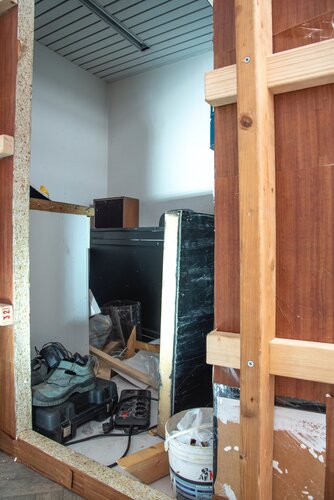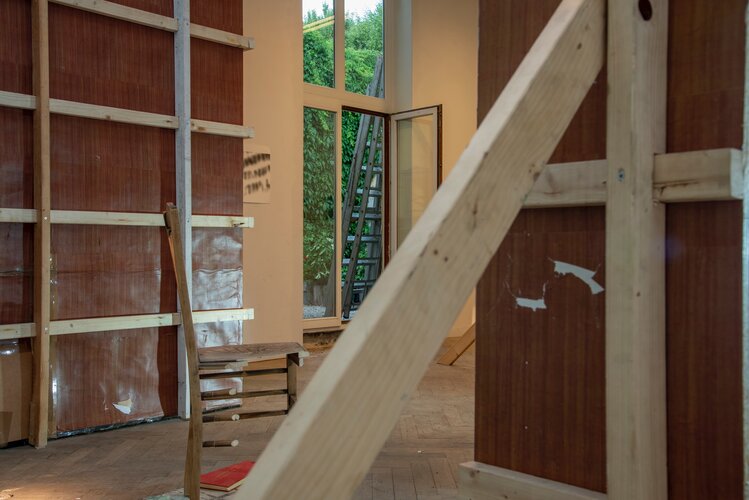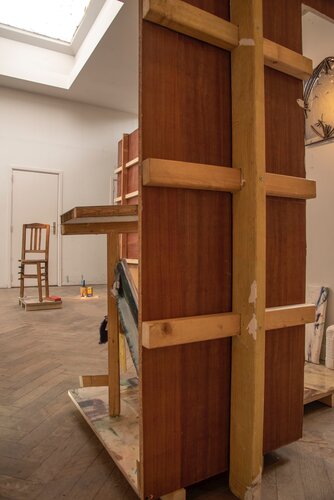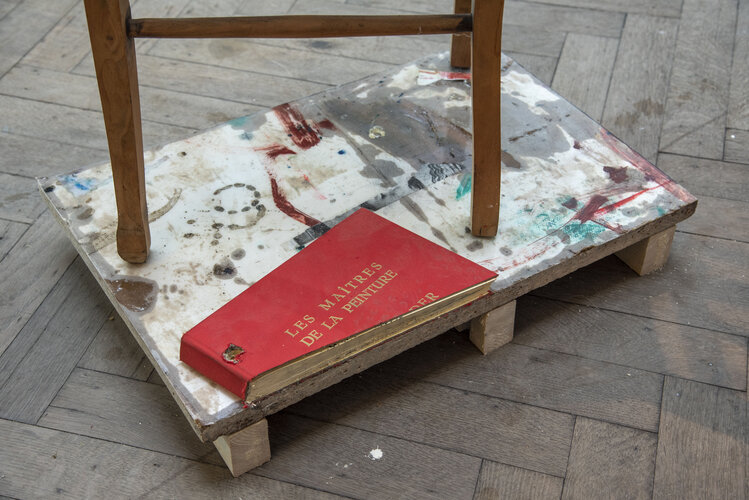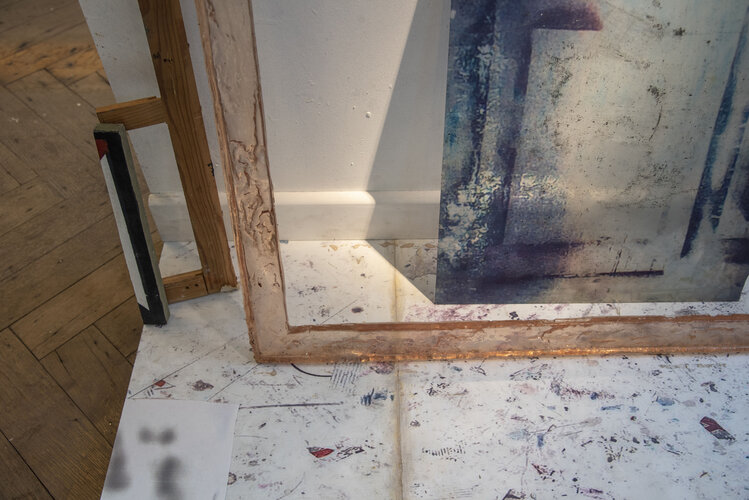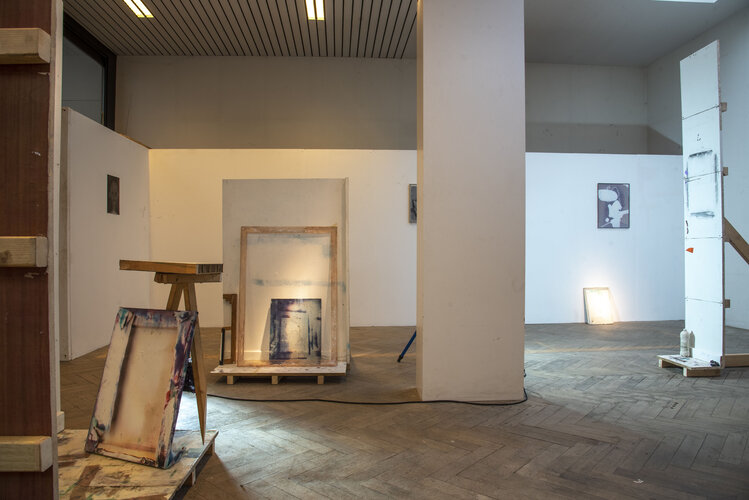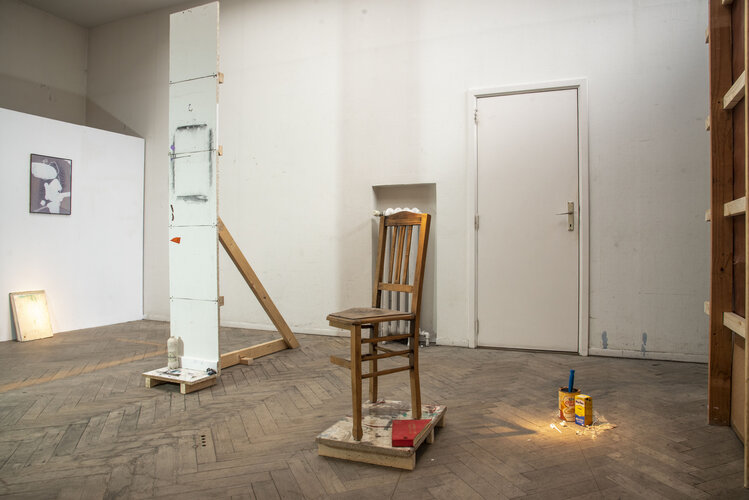Untitled
Untitled
This installation focuses on simulation and fragmentation in today’s society. I aim to highlight
the illusions made by painters and promoted by the media in our daily lives. Baudrillard said
simulation happens when we lose touch with reality. We make copies that don’t relate to their
original anymore, leading to a state of hyperreality, where it’s hard to tell real from fake.
From the start, painting has been a representation of nature. By copying nature, painters give the
illusion of it on canvas. They ‘cut out’ a part of reality and create their version within the frame.
Today, photography does something similar. On social media, people show their version of reali-
ty, which might not always match the truth. If others believe this version, it becomes their reality,
and the lines between real and fake blur.
Walter Benjamin said reproductions, like photos of art, lack an “aura.” This aura is the real, phys-
ical feel of art. It’s seen in things like scratches or damages. Using his comparison, we’ve lost
some originality, especially related to nature. With all these copies and versions of nature, reality
gets split up. Even our everyday rooms are, in a way, ‘cut outs’ of space. In these spaces, everyone
can present themselves as they want, shaping their reality.
Inspired by this, I built this work. In my installation, I recreated parts of my studio using struc-
tures resembling movie sets. Just like paintings or photos, the installations are ‘cut outs’ from my
studio. They show the process behind creating an image. They’re not exact copies but simula-
tions. I either took real paint stains from my studio or recreated them. Some are genuine; others
are prints. I also printed wooden patterns on some parts. If viewers look closely, they can see the
pixels, making them question what’s real.
Working in the exhibition space turned it into a kind of studio or stage, adding layers to reality.
Objects left during setup looked staged, so I kept them to add to the viewer’s confusion. There’s
a big room in the exhibition space. I covered it with wooden prints and structures, similar to the
main installations. Inside, I stored items during setup. Leaving them there made it look like I
planned that room too, causing more confusion about what’s real or staged.
I want viewers to look closely, to see details like paint stains, helping them find out what’s real.
These details remind me of Benjamin’s aura, the realness of an item. By noticing them, viewers
can break the illusion and see the reality. 1e installation’s ‘cut outs’ remind viewers of the frag-
menting nature of our daily lives. They add layers, making the space feel like a different kind of
painting. It’s tied to its space, making it unique to its location. For example, it highlights small
damages on the exhibition walls. This emphasizes the realness of the space itself more than any
illusion created by a picture or painting. But also created more confusion on what marks where
there originaly and wich i added. Thus creating a space full of confusion, never really grasping
reality.
Geert Goiris ( Photographer):
“Camiel Vandenbussche manages to connect the overworked romance of the artist's studio with
the pixelated and wrung-out image that Hito Steyerl advocates for in her "In Defense of the Poor
The umpteenth swan song of painting is playfully dramatized and staged. Our gaze is
both sharpened and blurred. Occasionally it is clear what we are looking at, but often it is not.
Also, the confusion between elements that the artist added and the traces already present in the
space, the brutality of the con-struction lights shining mercilessly on the installation, and the
glimpse into the cubicle where all the junk was thrown together, which also becomes part of the
staging as an artist's space, give a strange first impression. During the viewing process, however,
I be come aware of my assumptions and reductions; this exhibition reveals itself only gradually
and probably never completely. An antidote to quickly digestible, spectacular gestures, but there-
fore relevant and refreshing.”
Kasper De Vos (Sculptor):
“A quirky spatial reflection on the boundaries of painting that in a poetic and theatrical way
shows a deeper awareness of a Guid and changeable reality. shows a deeper awareness of a fluid and changeable reality.”
Iris Paschalidis (curator, S.M.A.K: museum of contemporary art Ghent):
“Camiel managed to convince the jury with his final project in which he tackled the major prin-
ciples of (painter) art. His presentation contained a beautiful tension around matter and concept,
and moreover, he knew how to cleverly emphasize relief in the execution and hanging. This was
achieved both through lighting, placement, and his special talent for responding to space. Not
only did Camiel delve deeply into the issues surrounding painting, but he also addressed the
questions about reproducing and presenting, demonstrating a promising start in audacity and the ability to think through thoroughly and radically.
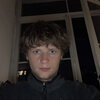
camiel vandenbussche
Ontwerp: Studio Mast | Website: eps en kaas

